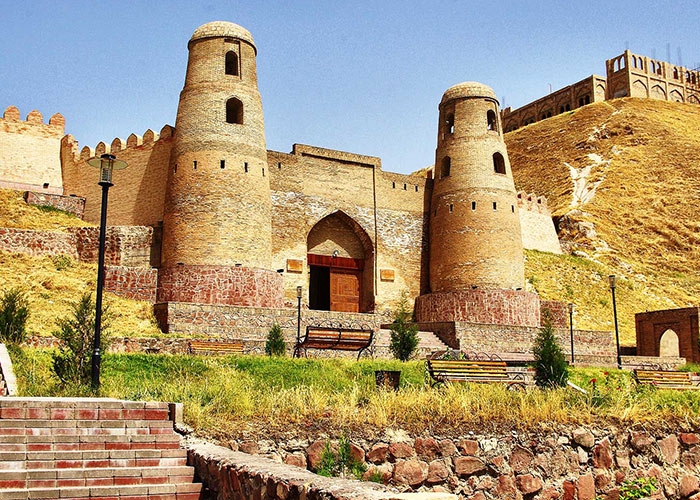General information about Tajikistan.
The Republic of Tajikistan is a country in Central Asia that is situated in the foothills of the Pamir Mountains. Tajikistan shares borders with such countries as China, Kyrgyzstan, Afghanistan, and Uzbekistan.
The Republic of Tajikistan is considered the only Persian-speaking state in Central Asia.
The population consists mainly of Tajiks, who are Sunni Muslim.
General information
The city was founded in the ninth century BC.
Independence Date: September 9, 1991
Capital: Dushanbe;
Big cities: Dushanbe, Khujand, Kulyab, Kurgan-Tube, Istaravshan, Kanibadam, Penjikent, Khorog, Tursunzade;
Area: 143,100 sq. km.
Tajik is the official language.
International languages: Russian
Presidential republicanism is the government's form of government.
The population is 8,486,300 people.
tj's internet zone
Religion: Islam, Orthodox Christianity,
Currency: Somoni.
The Republic of Tajikistan is very rich in natural resources.
The Flag of the Republic of Tajikistan:
The Tajikistan flag has three horizontal stripes: red, green, and white. The flag shows a stylized golden crown and a semicircle of seven stars. The crown and stars fit into a rectangle, and the five-pointed star into a circle.
The Tajikistan flag was adopted in 1992.
There are several interpretations of the flag colors:
Red-independence
White-calm.
Green-prosperity.
The symbolism of flowers goes back far in ancient times. If you start from the Avesta, it is believed that society was divided into three main estates, each of which is associated with a color:
Red-the military elite. Self-sacrifice and valor
White, clergy. Moral purity;
Green-freemen. Prosperity and nature.
The Republic of Kyrgyzstan's coat of arms is as follows:
The State Emblem of the Republic of Tajikistan is a stylized crown and a semicircle of seven stars in the sun that rises from behind the mountains, snow-covered with a framed crown. On the right side are ears of wheat, and to the left are branches with opened bolls of cotton. At the top of the crown is interwoven with a three-way ribbon, and at the bottom, there is the book on a special stand.
National holidays
1 January-New Year;
8 March, International Women's Day;
Navruz, March 21–24;
Labor Day is May 1st.
9 May—Victory Day;
27 June-Day of National Unity;
9 September, Independence Day; and
November 6, Constitution Day.
The official currency of the Republic of Tajikistan is considered somoni. In the exchange offices and banks, you can exchange dollars and euros for the local currency. The Visa card is also accepted in the country.
You have the right to import and export from the country of the currency in unlimited quantities. The most important thing is to include the amount of money in the declaration.
The population of Tajikistan.
Tajikistan is a multinational country where more than 80 nationalities live today. Tajiks accounted for 79.9% of the population, Russians for 1%, Uzbeks for 15.3%, and so on.
It is estimated that the current population of the Republic of Tajikistan is more than 6 million. In Tajikistan, most families have many children, and the population is growing in the end.
According to the computation, in 2016 the population will reach a number more than 150,000 people. In addition, by the 2017th year, the population of Tajikistan will be more than 8,000,000 people.
The national currency of Tajikistan.
Somoni is considered the national currency of Tajikistan.
The name of the Tajik national currency has changed due to the founder of the Tajik government, Ismoil Somoni.
To avoid confusion, all banknotes differ not only in their color scheme but also in their size.
One somoni is equal to 100 dirhams.
To date, in the Republic of Tajikistan, this has involved such banknotes as 1, 5, 10, 20, 50, and 100 somoni. Diram: 1, 5, 20, and 50. Also, in cash, use 1, 3, and 5 somoni coins.




